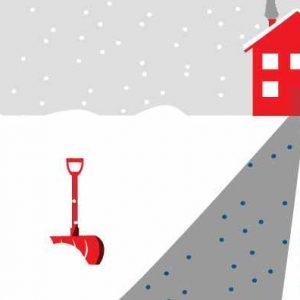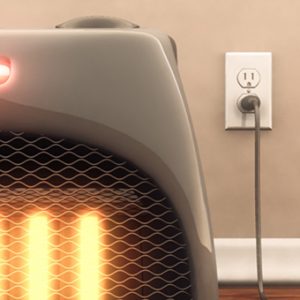An important part of preparing your home for winter weather is to take precautions to prevent ice dams. Knowing what an ice dam is, minimizing the conditions that make it possible to form and remove an ice dam as soon as you spot it can help prevent serious damage to both the roof and the inside of your home.
Take Action Before Snow Starts Falling
When warm air from your home or attic melts snow on your roof, an ice dam may develop during the cold winter months. The melted snow may refreeze at freezing temperatures once it reaches the roof’s colder edge. Keeping your attic temperature at or below 32 ° F can help prevent the development of snow from melting and ice dams. Some steps that you can take to help prevent the cycle of snow melting and freezing that often causes ice dams are as follows:
- Insulate your attic. Make sure that your attic is properly insulated to prevent warmth from flowing through the ceilings. An insulation value of R-40 is recommended wherever possible.
- Prevent air leaks. Check and seal any openings where warm air or heat could flee into the attic, such as vent pipes, exhaust fans, chimneys, hatches in the attic and/or light fixtures.
- Improve ventilation. Increase the number or size of vents in the attic, roof or soffit that allow cold air to circulate and flush out warmer air in the winter.
- Install a water-repellent membrane. Install a water-repellent membrane under the shingles when replacing the roof cover. This acts as an additional barrier that should form an ice dam, helps prevent water from flowing into the building.
Tips to Help Prevent Ice Dams Through the Winter
Despite your best efforts to keep your roof at the right temperature, Ice dams can sometimes form. Make sure you monitor the weather and maintain your roof for additional protection against ice dams throughout the colder winter months, such as:
- Clear gutters and downspouts. Prevent the accumulation and possibly freezing of water in your gutters by cleaning leaves, debris and accumulation of snow from the gutters and downspouts in and around. Making sure your gutters are properly pitched can also help prevent water collection in low spots and help reduce ice buildup potential in gutters.
- Remove snow accumulation from your roof after every storm. Whenever possible, immediately after each storm, use a roof rake to clear snow about 3 to 4 feet from the edge of your roof. Snow accumulation along the edge of your roof increases the probability of developing an ice dam that prevents water from draining off the roof. This water can then back up underneath roof shingles and make its way into your home.
- Remove ice dams as soon as you spot them.Often check your roof and know how to help identify an ice dam and remove it.
CAUTION: Avoid using a ladder in snowy and icy conditions. This can be extremely dangerous and is best left to the professionals.
1www.travelers.com




